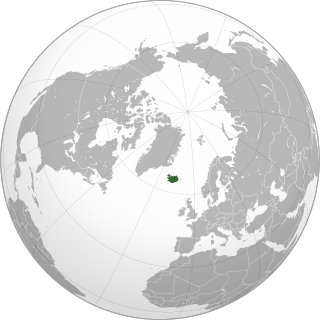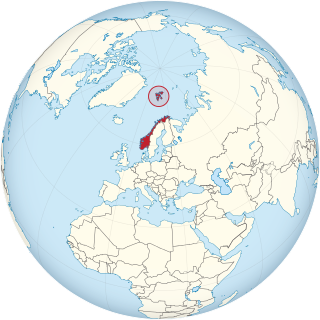
Ultra was the designation adopted by British military intelligence in June 1941 for wartime signals intelligence obtained by breaking high-level encrypted enemy radio and teleprinter communications at the Government Code and Cypher School (GC&CS) at Bletchley Park. Ultra eventually became the standard designation among the western Allies for all such intelligence. The name arose because the intelligence obtained was considered more important than that designated by the highest British security classification then used and so was regarded as being Ultra Secret. Several other cryptonyms had been used for such intelligence.

U-571 is a 2000 submarine film directed by Jonathan Mostow from a screenplay he co-wrote with Sam Montgomery and David Ayer. The film stars Matthew McConaughey, Harvey Keitel, Bill Paxton, Jon Bon Jovi, Jake Weber and Matthew Settle. The plot is fictional and portrays a World War II German submarine boarded by American submariners to capture her Enigma cipher machine.

Operation Claymore was a British commando raid on the Norwegian Lofoten Islands during the Second World War. The Lofoten Islands were an important centre for the production of fish oil and glycerine, used in the German war economy. The landings were carried out on 4 March 1941, by the men of No. 3 Commando, No. 4 Commando, a Royal Engineers section and 52 men from the Norwegian Independent Company 1. Supported by the 6th Destroyer Flotilla and two troop transports of the Royal Navy, the force made an unopposed landing and generally continued to meet no opposition. The original plan was to avoid contact with German forces and inflict the maximum of damage to German-controlled industry. They achieved their objective of destroying fish oil factories and some 3,600 t of oil and glycerine. The British experienced only one accident; an officer injuring himself with his own revolver and returned with some 228 German prisoners, 314 loyal Norwegian volunteers and a number of Quisling regime collaborators.

Room 40, also known as 40 O.B., was the cryptanalysis section of the British Admiralty during the First World War.
Cryptanalysis of the Enigma ciphering system enabled the western Allies in World War II to read substantial amounts of Morse-coded radio communications of the Axis powers that had been enciphered using Enigma machines. This yielded military intelligence which, along with that from other decrypted Axis radio and teleprinter transmissions, was given the codename Ultra.

The Arctic convoys of World War II were oceangoing convoys which sailed from the United Kingdom, Iceland, and North America to northern ports in the Soviet Union – primarily Arkhangelsk (Archangel) and Murmansk in Russia. There were 78 convoys between August 1941 and May 1945, sailing via several seas of the Atlantic and Arctic oceans, with two gaps with no sailings between July and September 1942, and March and November 1943.
The B-Dienst, also called xB-Dienst, X-B-Dienst and χB-Dienst, was a Department of the German Naval Intelligence Service of the OKM, that dealt with the interception and recording, decoding and analysis of the enemy, in particular British radio communications before and during World War II. B-Dienst worked on cryptanalysis and deciphering (decrypting) of enemy and neutral states' message traffic and security control of Kriegsmarine key processes and machinery.

Convoy PQ 18 was an Arctic convoy of forty Allied freighters from Scotland and Iceland to Arkhangelsk in the Soviet Union in the war against Nazi Germany. The convoy departed Loch Ewe, Scotland on 2 September 1942, rendezvoused with more ships and escorts at Iceland and arrived at Arkhangelsk on 21 September. An exceptionally large number of escorts was provided by the Royal Navy in Operation EV, including the first escort carrier to accompany an Arctic convoy. Detailed information on German intentions was provided by the code breakers at Bletchley Park and elsewhere, through Ultra signals decrypts and eavesdropping on Luftwaffe wireless communications.

HMS Tartar was a Tribal-class destroyer of the Royal Navy that saw service in most of the naval theatres of World War II. She had an eventful career, eventually receiving the nickname 'Lucky Tartar' due to her numerous escapes from dangerous situations. She was one of only four from the sixteen Royal Navy-operated Tribal-class destroyers to survive the war.

HMS Nigeria was a Fiji-class light cruiser of the Royal Navy completed early in World War II and served during that conflict. She was named after the British colony of Nigeria.
Before the development of radar and other electronics techniques, signals intelligence (SIGINT) and communications intelligence (COMINT) were essentially synonymous. Sir Francis Walsingham ran a postal interception bureau with some cryptanalytic capability during the reign of Elizabeth I, but the technology was only slightly less advanced than men with shotguns, during World War I, who jammed pigeon post communications and intercepted the messages carried.

Naval trawlers are vessels built along the lines of a fishing trawler but fitted out for naval purposes; they were widely used during the First and Second World Wars. Some—known in the Royal Navy as "Admiralty trawlers"— were purpose-built to naval specifications, others adapted from civilian use. Fishing trawlers were particularly suited for many naval requirements because they were robust vessels designed to work heavy trawls in all types of weather, and had large clear working decks. A minesweeper could be created by replacing the trawl with a mine sweep. Adding depth charge racks on the deck, ASDIC sonar below, and a 3-inch (76 mm) or 4-inch (102 mm) gun in the bow equipped the trawler for anti-submarine duties.

Operation FB took place as part of the Arctic Convoys of World War II. The operation consisted of independent sailings by unescorted merchant ships between Iceland and Murmansk. In late 1942, Allies had taken the offensive against Germany but the dispatch of supplies to the USSR by convoy via the Arctic route was suspended, due to the demands of the Mediterranean campaign. Convoy PQ 19 was cancelled because the Home Fleet diverted ships to the Mediterranean for Operation Torch which would have had to be postponed for three weeks had ships been provided for PQ 19.

OB 318 was a North Atlantic convoy which ran during the Battle of the Atlantic in World War II. During Operation Primrose Royal Navy convoy escorts HMS Bulldog, Broadway and Aubrietia captured U-110 with an intact Enigma machine and a wealth of signals intelligence, which led to the Allied breakthrough into cracking the German naval Enigma code.
Commander Henry Alexander Stuart-Menteth, was a British naval officer famous for his service in the Royal Navy, particularly during the Second World War where he assisted in the sinking of two U-boats and helped capture Enigma code fragments, which enabled Bletchley Park to decipher the code. He commanded six ships during his career. He married in 1952, having two sons and a daughter, and seven grandchildren in turn.
The Short Signal Code, also known as the Short Signal Book, was a short code system used by the Kriegsmarine during World War II to minimize the transmission duration of messages.
The Short Weather Cipher, also known as the weather short signal book, was a cipher, presented as a codebook, that was used by the radio telegraphists aboard U-boats of the German Navy (Kriegsmarine) during World War II. It was used to condense weather reports into a short 7-letter message, which was enciphered by using the naval Enigma and transmitted by radiomen to intercept stations on shore, where it was deciphered by Enigma and the 7-letter weather report was reconstructed.

Erhard Maertens or Eberhard Maertens was a German Vizeadmiral of the Kriegsmarine during World War II. From 16 June 1941 to 5 May 1943, he was Chief of Office of Naval Intelligence, Naval War Command in the Oberkommando der Marine. Maertens was known for underestimating British intelligence, and specifically, overrating the security of the Naval Enigma cipher machine. In 1941, he held a naval enquiry into the strength of Naval Enigma security after the capture of U-boat U-570, and attributed all the suspicious losses in U-boats at the time to the British Huff-Duff. In the second enquiry, ordered by the Commander-in-Chief of the Navy Karl Dönitz, in May 1943, he investigated a number of areas, which exculpated Enigma security in the end, for the second time, incorrectly blaming British 9.7 centimetre centimetric radar for the massive losses in U-boats by mid 1943.

Operation Gearbox was a joint Norwegian and British operation to occupy the Arctic island of Spitzbergen during the Second World War. It superseded Operation Fritham, an expedition in May, to secure the coal mines on Spitsbergen, the main island of the Svalbard Archipelago which had failed when attacked by four German Focke-Wulf Fw 200 Condor reconnaissance bombers. The Norwegian force, with 116 long tons (118 t) of supplies, arrived by British cruiser on 2 July.

Operation Gearbox II was a Norwegian and British operation during the Second World War on the Arctic island of Spitzbergen in the Svalbard Archipelago. Operation Fritham, the first attempt to establish a base had been defeated when the two ships carrying the force were sunk by Luftwaffe bombers on 14 May.














